|
The following pictures demonstrate the
difference between male and female rats. It's very easy to tell the difference
as they reach 5 weeks and above and with a little bit of practice and close
observation of the key differences, hopefully the following pictures will
demonstrate this.
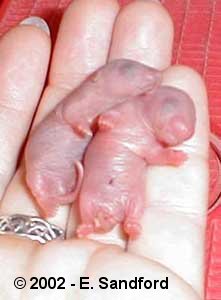
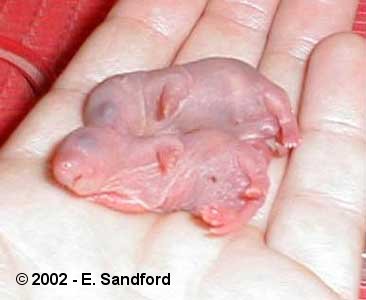
At 2 hours old and it is possible to tell
the sexes of your kittens. In the 1st picture the buck is on the left and the
doe on the right, note the larger 'lump' where the penis is on the buck. In the
2nd picture, the doe is in the foreground and the buck behind. I sex my kittens
within the first 48 hours of being born, but I do recheck later as well as it is
still possible for even a trained eye to make mistakes when they are this age.
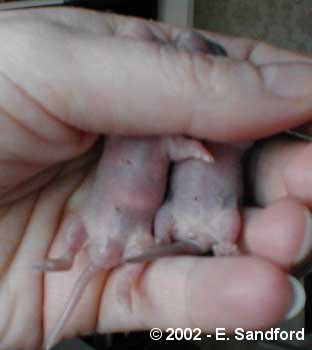

At 4 days old - buck on left, doe on right
in both pictures. Notice the gap between the does urethra and anus are much
smaller than the gap between the penis and anus of the buck.
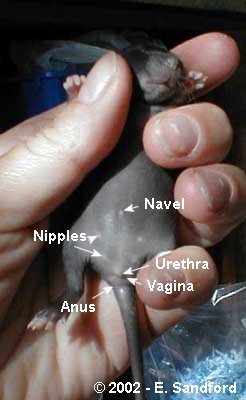
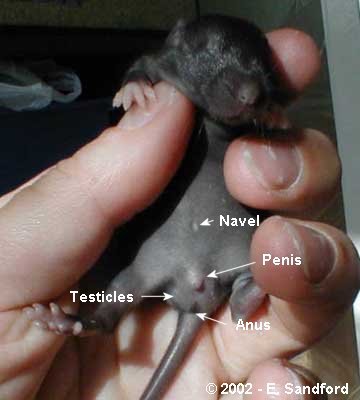
At 9 days old on a darker coloured rat the
difference is very noticeable as the doe clearly has nipples showing in the left
hand picture - does have 6 nipples on each side, totalling 12 in all. You can already see the hint of the testicles shape appearing on
the buck in the right hand picture. You can see the navel in the centre of the
stomach on both buck and doe at this age. It looks a little like a nipple at
this age, but bucks only have the navel while does have 12 nipples up the side
plus the navel!

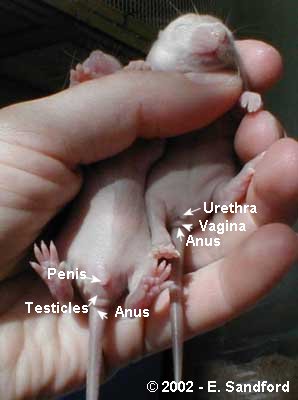
Also at 9 days old for comparison. In the
1st picture the doe is on the left and the buck on the right and in the 2nd
picture the buck is on the left and the doe on the right, but the nipples are
not obvious on lighter (in this case Siamese) kittens.
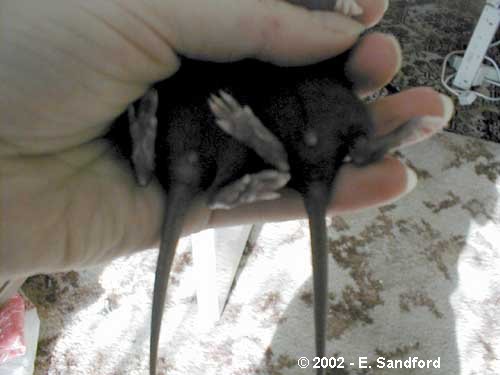
At 14 days old. The rats are fully furred
now but the gap is still pretty obvious. The doe is on the left and the buck on
the right.


At 5 weeks old. As you can see the
testicles have descended on the buck in the left hand picture and it is very
clear which is which now. By this age, the kittens must be separated as the buck
is capable of siring litters and the doe is capable of becoming pregnant. They
don't always have the immediate desire to mate each other but it does happen, so
it is important to separate to avoid the risks of unwanted kittens from a doe
that is too young to be breeding yet.
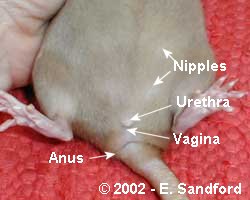
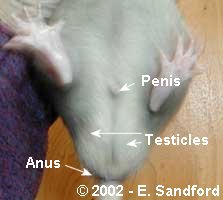
As adults, doe on left and buck on right.
The difference is very clear and bucks testicles are very apparent! When a doe
is in season, the vaginal hole becomes dilated and after mating it's often
possible to see a vaginal plug where the sperm has made a solid 'cork' to keep
it in place.
Article written by Estelle
Go back |

